The price of professional plugins can be intimidating or outright prohibitive to amateurs and veterans alike. It’s not unusual to see a single effect to retail in excess of $200. For hardware, even more so.
Fortunately, many plugin developers release free software. Whether it’s to get their name out there, generate a sense of altruism or some other dubious ploy, it’s something we can all get behind.
This article focuses on the more accessible and user-friendly plugins that most producers should find at least some use for.
Blue Cat’s Freeware Plug-ins Pack II

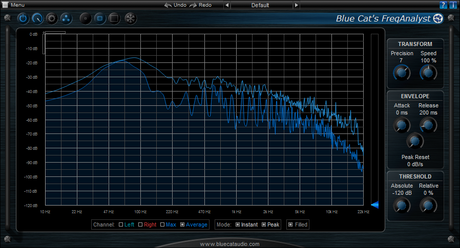
I’m cheating slightly by including this as a single entry, but these plugins share a cohesive style and are fairly simple at heart, so why not?
The phaser, chorus and flanger plugins are the most visually similar in the bundle which I appreciate as it prevents them from becoming needlessly more difficult to use. There’s not a lot to say about these three, to be honest; they work as is and I recommend them.
Oddly enough, the gain plugin is also pretty useful. At first glance, I thought it was just a big volume knob, but it actually allows different channels to be grouped together so that gain can be controlled together or in reverse with each other. While your DAW of choice most likely already has a way of doing this through send tracks, BC Gain is potentially a nice way to clean up your workflow.
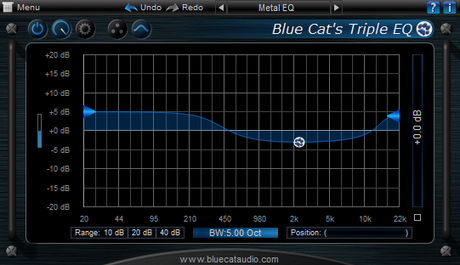
Unfortunately, I’m not so fond of the last two plugins in the bundle. While there’s nothing wrong with the frequency analyzer, I prefer Voxengo’s SPAN. Triple EQ is the least useful included. As the name suggests, it’s an equalizer with three bands. Consider me spoiled, but it’s simply too restrictive to use over other parametric equalizers. Sorry, Blue Cat, but five out of seven isn’t so bad.
TAL-NoiseMaker
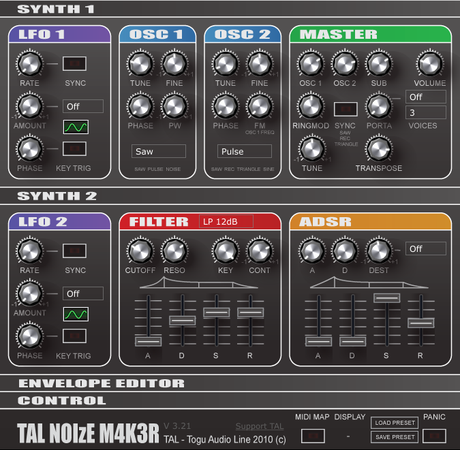
TAL’s only two paid plugins are emulations of the SH-101 and Juno-60 synthesizers. They also distribute a number of free plugins; mainly simple effects and a couple of basic synths. TAL-NoiseMaker, on the other hand, is far more feature-rich.
I wouldn’t normally mention presets, but it comes with 256 of them, so I feel obligated to. It certainly does a good job of showcasing the synth’s capabilities as well as serving as a starting point for making your own patches.
Listing all of its features wouldn’t really do it justice, plus TAL’s website does a good job of that already. Simply put, TAL-NoiseMaker is the best free subtractive synthesizer I’ve used.
Magical 8bit Plug
Developed by a member of the amazing Japanese chiptune group YMCK, Magical 8bit Plug is an extremely simple synthesizer; its controls include selections for waveshape, ADSR envelope and pitch sweeping. That’s all.
While true chiptune connoisseurs will prefer to stick to trackers, Magical 8bit Plug allows the rest of us to have access to a chip flavor without having to write music in a spreadsheet. It’s worth trying if only for the bright pseudo-triangle.
Ambience
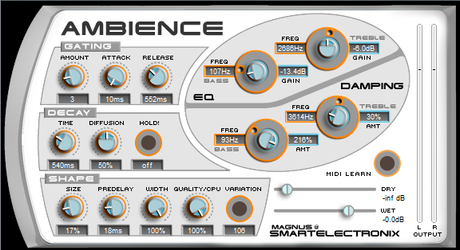
A pretty standard reverb plugin, but with a couple of features to set it apart from other free ones. Firstly, the hold function, which loops the current input into a kind of droning atmosphere. Secondly, a gating function which allows for some odd staccato effects.
Aside from those two creative tools, Ambience functions well traditionally too. If I were to be picky about it, I’d say that the damping and EQ sections take up too much space in the interface. The EQ is also a bit primitive, but there’s nothing stopping you from routing the wet signal to a more advanced equalizer.
CamelCrusher
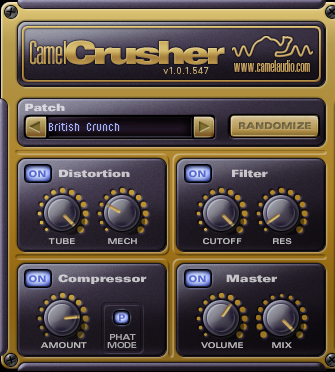
CamelCrusher can easily be seen as little more than a free trial for the more expansive CamelPhat, but I’m giving it a pass because, well, it sounds great.
My favorite use for it is processing drum loops, appropriately enough as it is designed for usage on drums and guitars. The distortion alone would warrant a download in my opinion, but with the additional features of compression and a really pleasing low-pass filter, it’s a must for anyone wanting to add some less-than-subtle character to their mixes.
Closing Thoughts
Free software is a great resource and this article is just the beginning of it, but, of course, we are limited by how much developers are willing to provide. Realistically, intricately modelled instruments and massive sound libraries can’t really be beaten by their free counterparts. Luckily, even VSTs are regularly put on sale seasonally, so eagle-eyed producers can circumvent some of the cost that way.
Also, items like MIDI keyboards and audio interfaces are often bundled with software instruments or even DAWs. If you’re on the lookout for new hardware, see if you can find pieces that include software that you’re also interested in but can’t justify buying on its own.
A word of caution, though: bundled software is sometimes in a stripped-down light version, so ensure that you’re happy with the included version’s features before buying.
